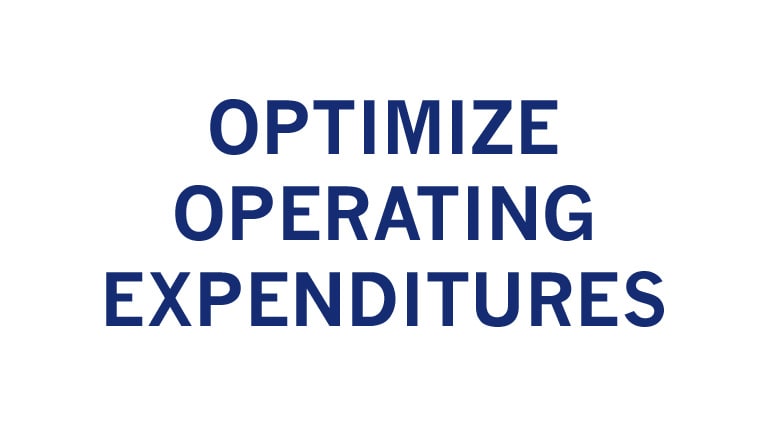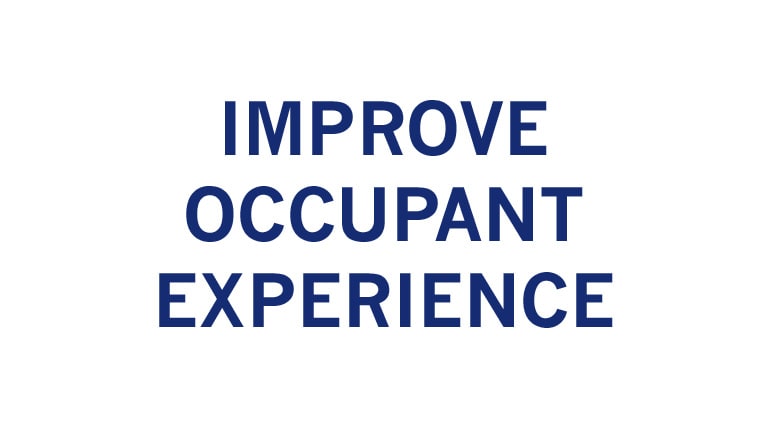


Carrier Can Partner With You To Improve Your School’s Indoor Air Quality
As school capital expense budget shrink and the school infrastructure gap remains elevated, school officials face high pressure decisions about where to allocate limited funding.1 To create optimal learning environments, some schools and districts have chosen to invest in HVAC and related solutions over other investments. For example, amongst approved spending categories, HVAC was the second highest spend category of planned spend ahead of summer learning programs and tutoring, in a recent analysis by the Center for Green Schools.1
HVAC investments are unique in their ability to deliver long-term occupant health and safety benefits along with building sustainability and operational benefits. HVAC investments can help schools or districts lower risk and optimize returns on investment through its potential effects on buildings and occupants.
Benefits of HVAC Solutions in Schools
The total value of HVAC investments is unique to each project and school but there are common occupant and operational value levers that can be considered when building a holistic value case. Compared to other potential investments, HVAC investments affect people as well as operations or infrastructure and those benefits can be difficult to quantify. However, there are proven examples of value generation that can help schools understand the total value of potential HVAC investments.


How Carrier Supports School Goals
Carrier is a top choice for schools looking for support on their path toward healthier, more sustainable and safer learning environments. This is because of Carrier’s proven success in providing solutions for schools across HVAC, building automation systems, digital solutions and services. Our solutions can be catered to match the unique requirement of each school and district throughout solution lifecycles from design to commissioning to ongoing service.
Products
Abound™
Abound, Carrier’s digital platform, can be utilized to support IAQ management, through real-time measuring capabilities of air quality, energy usage, occupancy, etc. allowing for improvement of learning environments over time.
Controls
Carrier provides controls for pre-installed non-Carrier or current Carrier equipment, through Automated Logic. Carrier’s control solutions provide automated usage for energy efficiency and optimal equipment performance.
HVAC
Products such as chillers, rooftop units, air handlers, air quality monitors, filters, indoor air purifiers and variable refrigerant flow (VRF) have been key solutions for schools.
Services
Carrier offers many assessments to help schools understand current building system performance through IAQ and equipment assessments, and Carrier’s Certified Healthy Air System (CCHAS) solution. These offerings support schools with identifying IAQ issues and targeting areas of improvement to provide better IAQ in the future.
NORESCO is a sustainability consulting organization for new and existing buildings, including schools. NORESCO solutions can help schools achieve sustainable outcomes by assessing and establishing a consumption baseline, selecting targets, designing solutions, and achieving targeted outcomes.
Carrier can support schools with commissioning and re-commissioning equipment. Our technicians can support optimal and reliable performance from installed solutions through services including start-ups, adjusting to factory settings, etc.
Carrier can support equipment maintenance post implementation, through BluEdge™ for proactive and predictive maintenance that can prevent equipment downtimes and frequent repairs. Other services include 24x7 Support & Prioritization and Operational Inspections.

Carrier can work with end consumers, third parties on behalf on consumers (e.g., contractors, engineer companies, co-operatives, and more) as needed to help realize project goals. To best serve our customers, Carrier can take on different project roles from end-to-end partner to equipment provider.
The case studies below showcase a few ways that Carrier has brought value to schools by working with school leaders to improve learning environments.
Virginia Beach City Public School (NORESCO)
Gallipolis School District
For more Carrier K-12 case studies, visit our K-12 Resource page.
Potential HVAC Investment Benefits that Increase Returns on Investment
HVAC investments are unique in their ability to deliver long-term occupant health and safety benefits along with building sustainability and operational benefits. HVAC investments can help schools or districts lower risk and optimize returns on investment through its potential effects on buildings and occupants.




HVAC Solution Considerations
Choosing the optimal HVAC investment is challenging. This is especially true if sources of funds are from ESSER, due to strict allocation and spending deadlines. To help guide school officials in the selection of HVAC investments and vendors, we recommend considering the following decision criteria to minimize investment risk while improving school learning environments.
For more information on ESSER and related funding, please visit the ESSER Funding & Resources page.
Frequently Asked Questions
Carrier solutions across HVAC, services and digital monitoring solutions are covered by many of federal or state funds available to America’s schools. Examples of funding sources include Elementary and Secondary School Emergency Relief Fund (ESSER), Department of Energy (DOE) grants and annual school budgets awarded by state and local authorities. Depending on the funding source, spending constraints will differ.
Example funding sources:
- ESSER: The U.S. government has provided funds through ESSER, which provides America’s schools $190B to invest into infrastructure improvements and prevent pandemic learning loss.1 Through ESSER, “many school districts have identified an interest in using their ESSER funds for HVAC improvement projects” to “improve the air quality in their buildings.”2
- Department of Energy Grants: The Infrastructure Investment and Jobs Act (IIJA) Grants for Energy Efficiency and Renewable Energy Improvements at Public School Facilities sponsored by the DOE, is providing an initial $80M in funding to schools to make energy improvements which include solutions like HVAC, lighting, monitoring and advanced controls, of the total $500M grant program.3,4 Funds are allocated to prioritize highest need districts to address energy efficiency.
- Budgetary Improvements: Administrators may be able to improve school budgets through increases from state and local general-purpose funding via increases to Average Daily Attendance (ADA). The ADA is the average number of schools days attended by students.5 ADA can be directly tied to most of a school's operating budget, as “even a small increase can significantly boost” funds.6 ADA can be increased through “reduced illness and user satisfaction”6, which are conditions that can be improved through investments into IAQ. As a leader in IAQ solutions, Carrier can help your district best select, install and maintain HVAC investments towards improvement of goals, such as increased ADA.
- State or Local Energy Programs: Lastly, schools within specific states may have additional opportunities for funding energy efficient and sustainable solutions, which can include HVAC. States like California, have started programs regarding energy efficiency and high-performing designs for new and existing schools, while offering financial incentives and loan programs to finance projects.6 As part of the program, districts in California can find potential areas for energy and resource savings, while prioritizing their needs.6
- ESSER Resources | School Outfitters
- ESSER & HVAC: What School Districts Need To Know | Bricker.com
- Grants for Energy Improvements at Public School Facilities | Department of Energy
- White House Starts $500 Million Energy Efficient Program for Schools | Smart Energy Decisions
- How Students Are Counted | Ed-Data
- Indoor Air Quality in High Performance Schools | US EPA
School and district officials can influence HVAC investment project timelines to expedite execution by engaging early and often with HVAC vendors, prioritizing timeline during solution selection, and choosing faster procurement options, like co-operative purchasing.
Project Planning & Early Vendor Engagement: It is important to work with HVAC vendors so schools can help to ensure they know about the latest product innovations available and realistic equipment lead times to use in project planning, and to be able to leverage the expertise of vendors like CARRIER® who have completed similar projects before. We recommend schools engage with potential HVAC vendors as early as possible, and throughout the design and solution selection process.
Solution Selection: Not all HVAC or IAQ solutions are created equal. Depending on your school’s needs there may be multiple potential solutions, some of which may have shorter lead times like products that are standard compared to customized. HVAC vendors, like Carrier, can help schools choose the solution that is right for their needs, including funding or timeline constraints.
Co-operative Purchasing: Cooperatives purchasing groups, also known as Co-Ops, have pre-established vendors and district relationships that can expedite time to purchase equipment and services. In some cases, the bidding process can be skipped if pre-approved vendors are chosen and with relationships already established purchasing operations are streamlined. This is a great solution for schools who know what they need and want to purchase quickly. Carrier has invested in co-op relationships to better serve our customers.
Advising schools on faster installation is a sample of what Carrier can do to support your school’s HVAC, IAQ and related projects. To learn more about how Carrier can support you, please contact us.
Schools should reach out to HVAC vendors as early as possible during the HVAC capital decision process, starting with a school’s capital plan and continuing through to servicing and maintenance.
During capital planning, we recommend schools include HVAC vendors like Carrier, which can be done directly or through a third-party like a co-op, engineer or consulting firm. Schools can also engage with Carrier while servicing equipment, during maintenance activities, etc. as part of a capital decision. Schools can stay in touch with Carrier as a service provider after installations, for HVAC needs such as recommissions, etc.
There is a wide variety of Carrier IAQ solutions that can make tracking and reporting of KPIs easier to manage. Reporting is a critical capability as oftentimes it is required as a stipulation for receiving funding and because it allows schools to better track return on investment and continuously improve.
IAQ tracking and reporting can be continuous or at predesignated points in time. We recommend that schools utilize continuous monitoring solutions, which can be automated to minimize labor resources. Continuous monitoring also allows schools to take real-time actions to optimize learning environments when IAQ falls outside of desired ranges, supporting improved IAQ over time.
Continuous or point in time solutions include digital tools, assessments and monitoring devices. These solutions can be applied at the classroom, school or district level, which enables district-wide performance analysis to determine best practices, internal benchmarks and help schools reach equitable performance.
To make reporting easier, Carrier offers Abound, Carrier Certified Healthy Air Systems certification program, Automated Logic Controls, i-Vu® controls, indoor air quality monitors and more.
Schools have a few ways to purchase Carrier HVAC and IAQ solutions each with their own trade-offs including directly or indirectly through engineering groups of co-operatives (co-ops). In whatever route your school chooses to purchase equipment, Carrier can be a partner at every step to help meet school equipment and service..
Schools can purchase Carrier solutions most commonly, through the following routes:
Mechanical, Electrical, And Plumbing MEPs: Schools can work with MEPs to design and specify their needs which can then be shared with vendors like Carrier. Working with an MEP means schools receive an expert turnkey solution from purchase to installation. However, this end-to-end service can come at a higher cost compared to schools taking on more responsibilities independently.
Cooperatives (Co-Ops): Schools can contract from co-ops to support with equipment purchases, depending on state policies. Co-ops represent a large customer base and have more buying power than individual schools. Purchasing through a co-op generally gives schools access to superior pricing and allows schools to avoid a request for proposal (RFP) process that can lengthen the time it takes to purchase equipment. This is because co-ops pre-approve select vendors and products in advance. However, schools are then responsible for finding additional providers to install, service and maintain equipment. Specific vendors, like Carrier, work well with co-ops and can offer turn-key installation solutions to simplify the process for schools.
Bidding Process: Schools can also put out a bid for a project to multiple vendors who can then choose to submit a proposal. The goal for schools is generally to compare at least two or three vendor vendors before deciding. This process is more comprehensive but does require more time than other purchasing options and does not always guarantee the lowest possible cost. An alternative approach is to choose a single trusted vendor upfront as a sole-sourced project.
1 School Facilities Funding in the Pandemic | USGBC ↩
2 Green Buildings for Healthier People | Urban Land Institute (ULI) ↩
Information is not to be considered legal advice. Please consult your legal or other professional advisors.